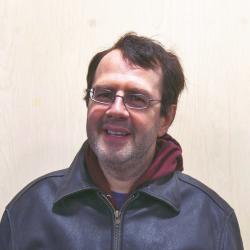Expect to find 3 to 5 language questions on the Praxis Core Reading exam. When you see these, be careful—they can be harder than they look.
On their face these questions seem simple, because they just ask for the meaning of a word. But you should always slow down and think. Most words can have different meanings in different contexts. And the Praxis Core loves to give you answer choices that could be a meaning of the word, but don’t match up to the context in the passage.
There are two types of language questions. Most language questions are of the “pick-the-definition” variety. These questions directly ask you what a word from the passage means. In rarer cases, a Praxis Core Reading language question will ask the test-taker to replace a word or phrase with another word or phrase. In this case, you’ll need to pick the replacement wording that changes the meaning the least, or doesn’t change it at all. These “replace-the-word” language questions look a little different than the pick-the-definition ones, but they measure the same skill-recognizing what a word means in context.
Below, I’ll give you a Praxis Core Reading passage, followed by two practice language questions—one pick-the-definition and one replace-the-word.
Passage
Daylight Saving’s Time (DST), was originally introduced in the nineteenth century. The goal of DST was to save money on lighting costs by changing the clocks so that workers always labored during daylight hours. At its inception, DST was an answer to the world’s newfound need for punctuality and efficiency. Today, however, many problems arise from this practice of moving timetables an hour forward in the spring and an hour back in the fall.
In twenty-first century commuting situations, this policy can cause traffic accidents. The University of Colorado-Boulder found that car accidents spike in late March, after clocks are set one hour forward for spring Daylight Savings Time. The reason appears to be poor sleep. Hard working commuters have trouble recovering from the lost hour of sleep that comes with the time change, and they are less alert as they drive to work.
DST practices can also lead to scheduling problems for multinational companies. Not all countries observe Daylight Savings Time. As a result, the time differences between international business offices is not consistent over the course of a year. For example, Lima has the same clock time as Chicago from March to November. But from December through February, it is one hour later in Peru than it is in Illinois. These differences create a lot of confusion. Missed phone appointments and hastily rescheduled conference calls are very common when some parts of the world make a DST clock change while other parts do not.
Praxis Core Reading language practice question: pick-the-definition
- In the second sentence of the second paragraph, the author probably uses the word “found” to mean:
- A) recovered
- B) determined
- C) felt
- D) looked at
- E judged
Praxis Core Reading practice question: replace-the-word
- In the first sentence of the third paragraph, which of the following can be substituted for “lead to” with the least change in meaning?
-
A go around
- B) ask to
- C) pass into
- D) happen after
- E) cause
Answer key
- 1) B
- 2) E





Leave a Reply